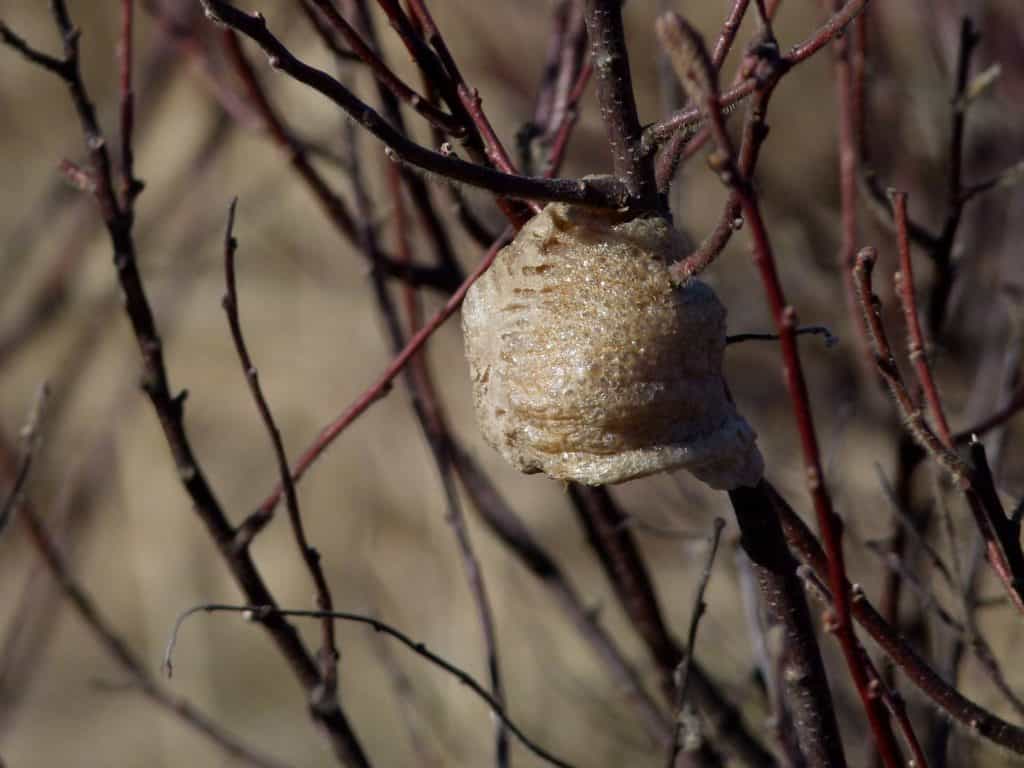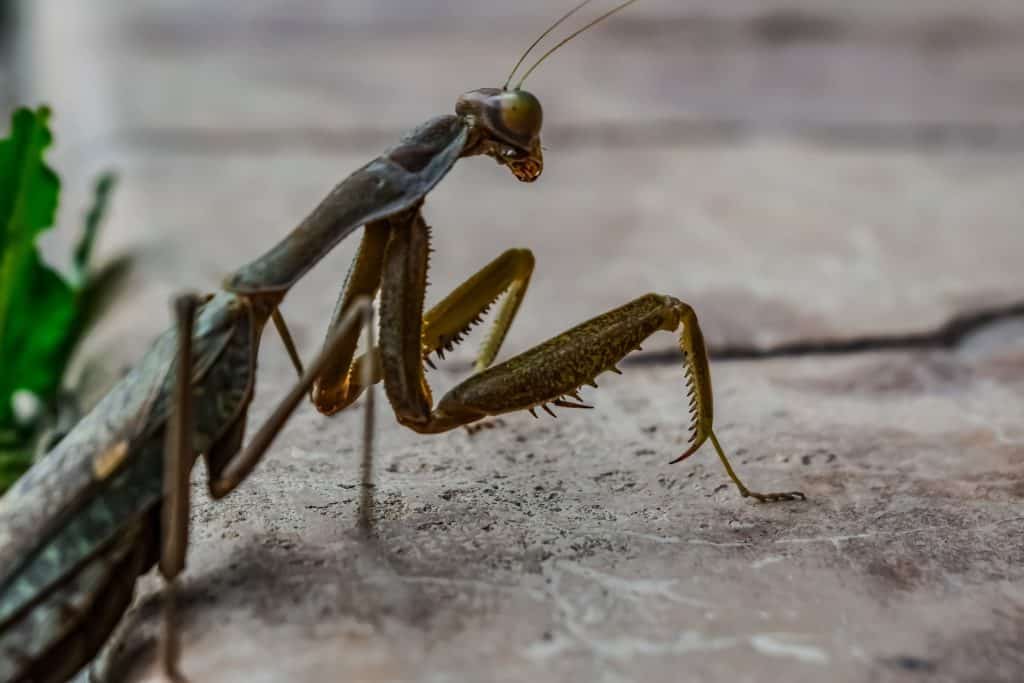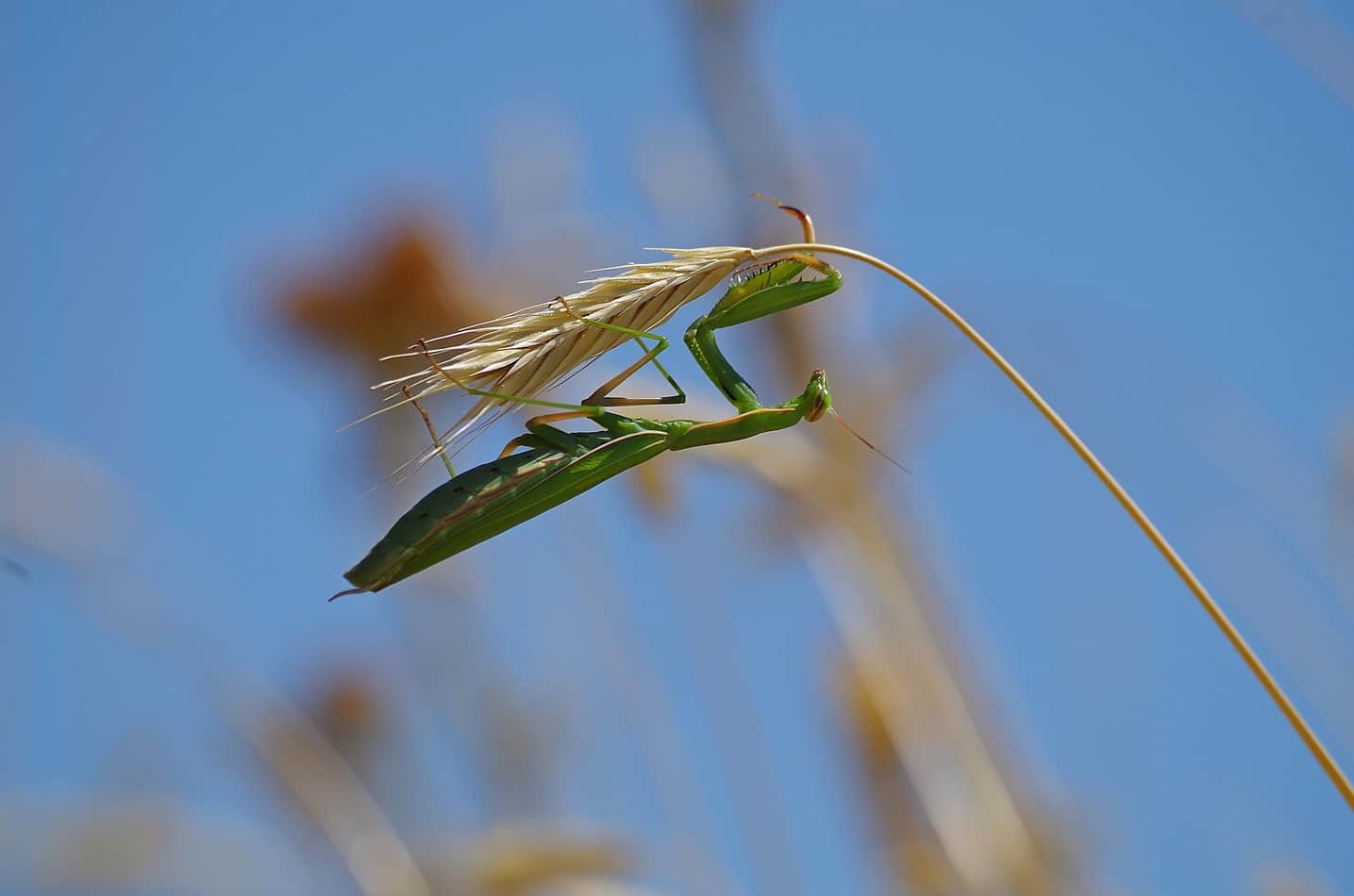Is the Praying Mantis Good for my Garden?
The answer is YES, ABSOLUTELY! If you find a praying mantis in your garden let him be, and hope for more. The praying mantis is one of many insects that are considered beneficial for gardens. This is because the praying mantis will feed on other insects considered pests to your growing plants, making the mantis a safe biological weapon against the onslaught of other insects that can plague your garden.
This article explores the benefits of having a population of praying mantis insects in your garden, and how you can get some if you don’t already have any.
Why is a praying mantis helpful for my garden?
The praying mantis (scientific name Mantis Religiosa) is an invertebrate insect ranging from half an inch to six inches long and named for its very prominent front legs that are bent and held together while resting or hunting, at an angle that suggests the position of prayer. The mantis is an adept, predaceous hunter, and voracious eater. Not only does the mantis feed round the clock, but most species of mantis are able to fly. This enables them to change hunting habitat when needs be, or to find areas of a garden most fertile with insects that may plague your garden such as crickets, grasshoppers, moths, mosquitoes, flies, or caterpillars.

With a giant triangular head poised on a long neck, or elongated thorax, two large compound eyes and three smaller ones, the mantis has a 300° field of vision. (Interesting fact: The mantis is the only insect proven to have 3D vision, like that of humans). A hunting mantis can spot even the slightest movement from as far as 60 feet away. In addition to its fantastic eyesight, the mantis is known for its brilliant camouflage. Typically, the mantis will appear brown or green, but often will take on the color of its habitat. Depending on its location, a praying mantis can mimic leaves, bark, twigs, and even other insects. In some habitats, the flowering mantis will mimic the appearance of different flower petals or leaves.
The praying mantis will lie in wait or patiently and slowly stalk their quarry. It will then ambush and devour its prey with strong sharp mandibles while holding them in its powerful forelegs barbed with overlapping rows of spikes.
These aspects make the mantis a killing machine. Known for being cannibalistic if it encounters another mantis, the female of the species is perhaps best known for its macabre tendency to devour its mate during or after mating. The mantis is a fearsome predator capable of killing prey three times its size. In tropical climates, the mantis has been known to prey upon small rodents, snakes, and occasionally hummingbirds.
How can I bring or attract mantids to my garden?
The best way to determine if you have a mantis population in or near your garden is to do some simple recognizance. Spend some time looking for signs of the mantis. Perhaps the most noted sign of a mantis, other than finding a specimen yourself, is finding a mantis egg case or sac. The praying mantis egg sac is usually white, cream, or tan colored, about one inch long, and rectangular or bulb shaped. The eggs are surrounded by a frothy foam (called ootheca) which later hardens into the egg casing.

Female mantids will lay their egg sacs on twigs and stems, fences, house siding, and eaves. We have found them in all of these places, including mailbox posts and an old unused wooden basketball standard. If you find a sac, you can carefully relocate it to your garden, where it will hatch and release the nymphs as temperatures warm. Each sac may contain as many as 300 mantis eggs. Of these 300, only one fifth will survive to adulthood. The egg sac of a praying mantis will lay dormant during the winter, and begin to hatch as soon as temperatures warm up in spring months. Many people will hunt for mantis egg sacs in the fall and winter for relocation into their gardens come spring and summer. The best time to hunt for egg sacs is from November through April.
Another action you can take to encourage praying mantis to visit your garden is to cease using any form of pesticides. Though you may worry that suspending the use of pesticides will increase your insect population, if you have a mantis population, they will have roughly the same effect, and are biologically, much friendlier for the environment.
Can I buy praying mantis for my garden?
The praying mantis has a rather complex life cycle, including an overwinter egg period, followed by a nymph stage, adulthood, and often cannibalistic mating ritual. Mantis egg sacs are found naturally occurring in most of North America, however, in more frigid climates may need to be purchased. Though you can purchase mantis egg casings at any time during the year, if you store them indoors, keep in mind that the warmer temperatures of your home may encourage hatching early. If this happens, you will likely need to separate your hatchlings into separate containers so they will not eat each other. It is also necessary that the container holding the nymphs has air holes, and a moist cotton ball (or other moisture source) placed inside. You will need to feed the babies (we recommend aphids or fruit flies) until the temperature outside warms up enough for them to survive when released. Caring for mantis nymphs and babies can be time consuming. For this reason, we recommend buying the egg casings in the late winter and hatching them for spring release in your garden. An alternative to this, if you do not have ready access to purchase egg casings in the winter, is to simply store the egg casings in a container (with air holes) in your refrigerator, to mimic winter temperatures.

Most insect dealers will sell mantis egg casings for this purpose. If you are unable to locate an insect dealer near you, we highly recommend you purchase for mail delivery from Natures Good Guys at https://www.naturesgoodguys.com/products/praying-mantis-egg-cases . We have ordered from this company in the past and have had a good experience. Through their website, you can buy two mantis egg cases for under $7, that will arrive well preserved and ready to hatch in one to two months. We highly recommend this company for the good work they are doing to promote biologically safe and responsible pest control measures.
Are there any negative aspects of encouraging the mantis population in my garden?
Though there are numerous benefits of having a mantis population in your garden, there are some adverse affects to consider as well. Most notably, though the mantis will hunt and devour insect pests, it does not know the difference between insects that are beneficial or harmful to your plants, and may decimate garden-beneficial insects. Keep this in mind before purchasing or releasing a mantis population in your home garden. Perhaps you are already benefiting from the presence of beneficial insects the mantis may see as prey. By adding the mantis to the habitat, you run the risk of decimating the presence of these other beneficial bugs.
Overall, the praying mantis is a fascinating and complex insect that can prove very beneficial to gardeners or herbalists seeking to remove pesky insects from their gardens without requiring the use of chemicals or pesticides. They can also be kept as a pet, but that is the subject for a different day.

